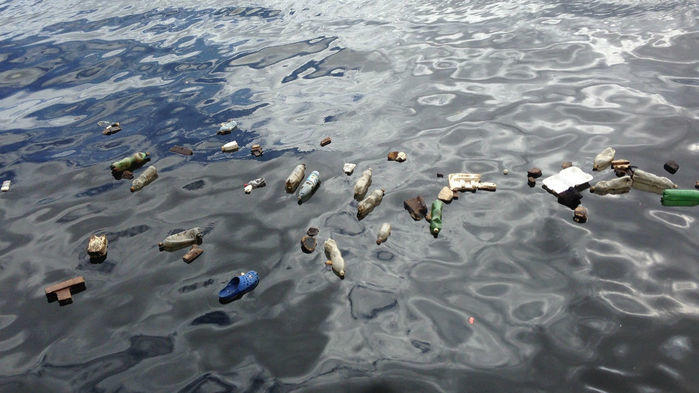You've probably heard that our oceans have become a plastic soup. But in fact, of all the plastic that enters Earth's oceans each year, just 1 percent has been observed floating on the surface. So where is the rest of it?
你可能已经听说了,我们的海洋里遍布塑料。但其实,每年进入海洋的塑料里,只有1%被看到漂浮在海面上。那剩下的去哪儿了?
This "missing" plastic has been a longstanding scientific question. To date, the search has focused on oceanic gyres such as the Great Pacific Garbage Patch, the water column (the part of the ocean between the surface and the sea bed), the bottom of the ocean, and the stomachs of marine wildlife.
“消失的”塑料是一个长期存在的科学问题。截至目前,搜寻的重点是海洋环流,比如大太平洋垃圾带、水柱(海洋表面和海床之间的部分)、海底和海洋动物的胃。
But our new research suggests ocean plastic is being transported back onshore and pushed permanently onto land away from the water's edge, where it often becomes trapped in vegetation.
但新的研究显示海洋塑料正在被运回岸上,被永远推到远离水边的陆地上,通常被困在植被中。

Of course, plastic has been reported on beaches around the world for decades. But there has been little focus on why and how coastal environments are a sink for marine debris. Our findings have big implications for how we tackle ocean plastic.
当然,数十年来一直有报道说全球的海岸上有塑料垃圾,但很少有人关注沿海地区为什么以及如何成为了海洋垃圾的汇集地。我们的发现对如何处理海洋塑料意义非凡。
Plastic pollution can be reduced through local changes such as water refill stations, rubbish bins, incentives and awareness campaigns.
塑料污染可以通过局部改变来减少,如补水站、垃圾箱、奖励以及提高认识的活动。
It can also be reduced through targeted waste management policies to reduce, reuse and recycle plastics. We found container deposit schemes to be a particularly effective incentive in reducing marine pollution.
利用有针对性的废物管理政策来减少、循环利用塑料也可以减少塑料垃圾。我们发现集装箱存放计划就是特别有效的减少海洋污染的激励措施。












